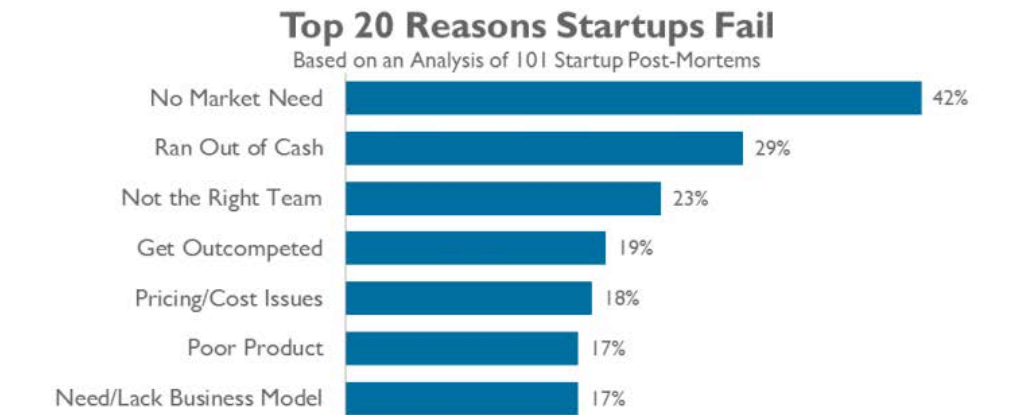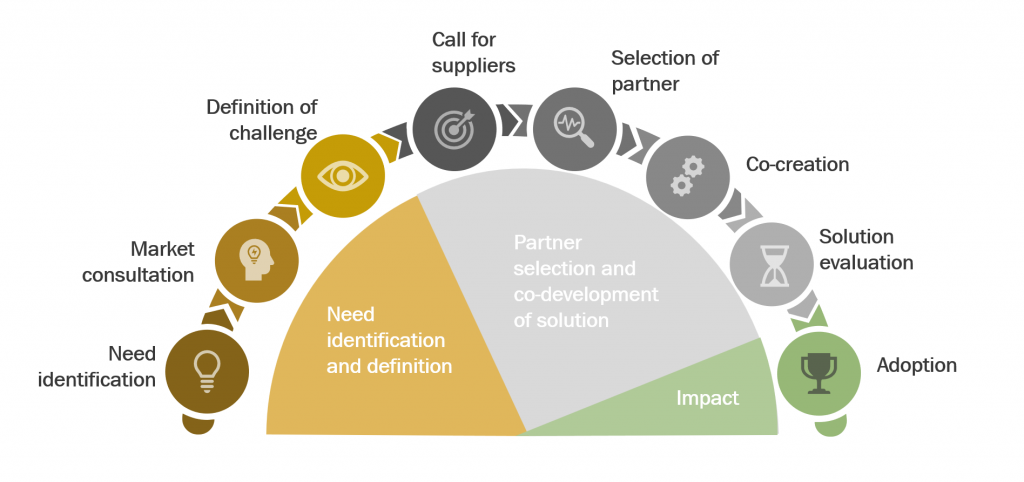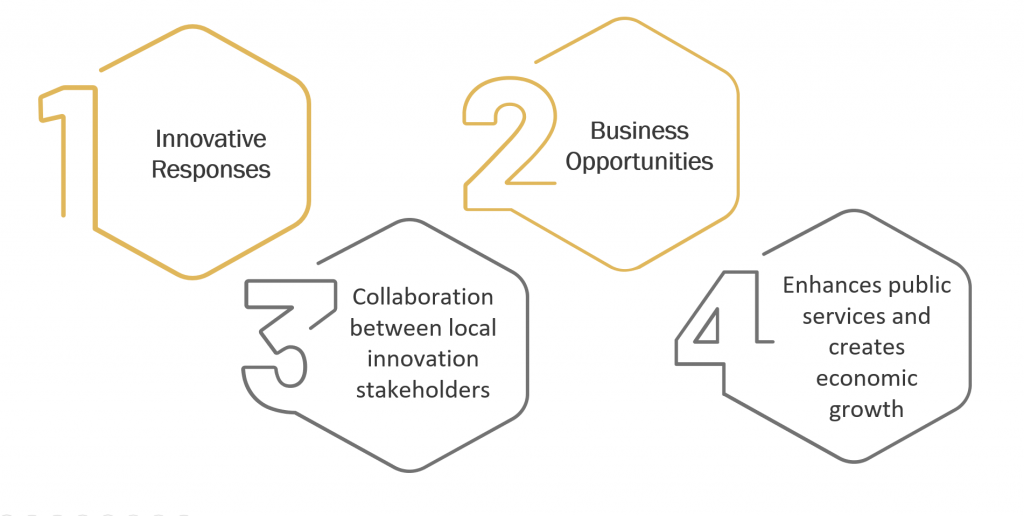Current regional innovation policies emphasise supporting startups and SMEs to develop and bring their solutions to the market. This technology push approach revolves around the business opportunities the entrepreneurs anticipate, and their efforts to acquire customers.
Sometimes though, promising companies struggle to spot the best market opportunity. By guessing “in the cave” what the pain points of their potential customers are, they may develop the right solution to the wrong problem and run out of cash before pivoting. This is cited as the number one reason why startups fail, according to a CB Insights Research report.

Demand-driven is an alternative approach towards identifying business opportunities. It is now the customer who states what is its unmet need and then looks for innovative partners to jointly co-create a solution. The organisation with the pain makes the ecosystem aware of the market gap and explains why it is important to get it solved.
A conceptual overview of the demand-driven process from the customer’s point of view:
Demand-driven approach life cycle

Take for instance the case of a regional public entity like a Regional Ministry of Health or of Education as the organisation that identifies and gets an unmet need solved. The benefits of successfully co-creating an innovative solution with the support of the local ecosystem have a quadruple dimension as it:
- Gives innovative responses to the challenges and improvement opportunities of that regional public administration.
- Creates business opportunities for private companies.
- Promotes the collaboration between local innovation stakeholders such as regional development agencies or business clusters for more effective and larger outcomes.
- Enhances public services and creates economic growth that, in turn, improves the citizens’ living standards.
Benefits of demand-driven innovation

Due to this promise, funders of innovation like the European Commission or National Ministries of Science have deployed policies based on this approach. Public procurement of innovation instruments aim to leverage the big spending power of public procurers (estimated at 14% of Europe’s GDP) while tackling their risk-averse culture.
However, these instruments cannot necessarily be transposed to the realities of those agencies promoting innovation at the regional level. Multi-phased co-creation periods with millionaire budgets are not sustainable under European Regional Development Fund (ERDF) fundings in many European regions.
Therefore, there is a need to design novel policies adapted to the available resources, both organizational and economic, of the local agencies while reaping the benefits of demand-driven co-creation.
Policies promoted by Regional Development Agencies (RDAs) and the like have several advantages:
- Yearly funding: ERDF may not have deep pockets, but it has a great advantage: it is annualized. This means it is predictable so beneficiaries can prepare themselves for the instrument deployment next year. For example, if a public entity identifies an unmet need outside the reception period, it knows it can be present in the next one which also increases the overall quantity of needs to choose from. Also, there is no need to explain and motivate those stakeholders who are already familiar with the process, boosting expansion and recruitment. The periodicity also enables faster learning and improvement over time.
- Complementarity of instruments: The RDAs can easily leverage other business support services, such as business modelling and access to private investment, to multiply the value delivered to the private companies participating in the co-creation.
- Proximity to the ecosystem: The direct knowledge of the local demand and supply facilitates faster and easier interactions. Besides, the closeness with other ecosystem stakeholders, such as technological centres, business associations, universities, and consultancies, contributes to increase the value exchange for mutual benefit. The geographical proximity also makes it easier to spread information and attract new stakeholders.
In this sense, PREPARE aims to propose demand-driven policies designed to fit into the capabilities and constrains of the agencies that promote innovation at regional level. The four participating regions: Murcia (ES), Oulu (FI), Skane (SE) and Bucharest (RU) have interacted with their local ecosystems to gather their views to shape the instruments to be deployed.
Join us in the upcoming workshop
The workshop. “Regional Policies to Promote the Adoption of Innovation by Public Administrations” presents the insights, resources and best practices acquired during the interaction. Regional stakeholders related to innovation policies and their counterpart offices in Brussels are invited to:
- Understand the benefits of the collaboration between public organizations and local innovators.
- Learn the feedback acquired from the local stakeholders of the Prepare regions.
- Share their own experiences and interests.
- Make proposals to design policies adapted to the regional realities.
- Access to a database of 300+ knowledge resources.
The event takes place on June 27th, from 9:00 until 12:30, at Avenue des Arts, 3, 5ª, Brussels (Region of Murcia office).
Please register here before June 25th.




